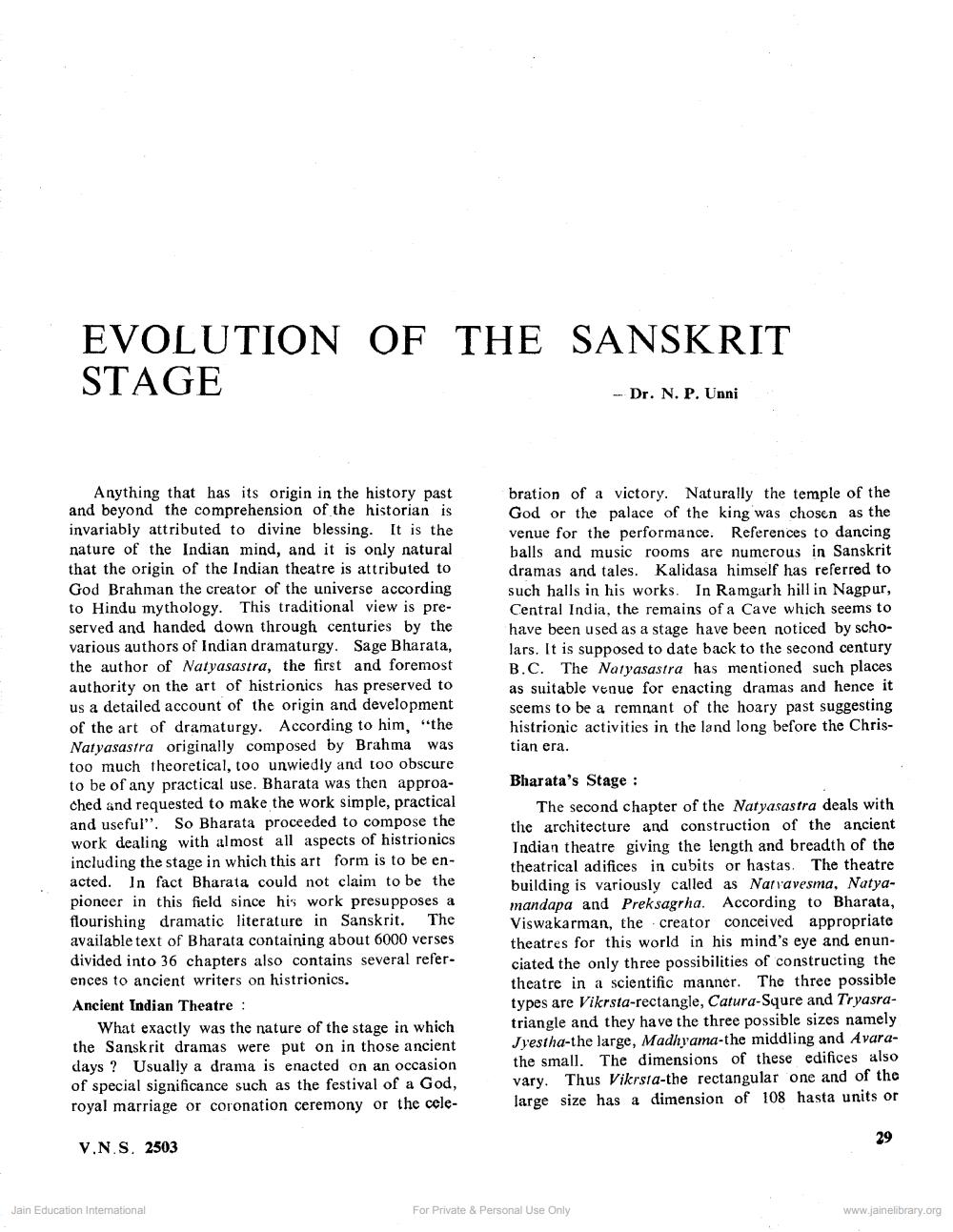________________
EVOLUTION OF THE SANSKRIT STAGE
-Dr. N. P. Unni
bration of a victory. Naturally the temple of the God or the palace of the king was chosen as the venue for the performance. References to dancing balls and music rooms are numerous in Sanskrit dramas and tales. Kalidasa himself has referred to such halls in his works. In Ramgarh hill in Nagpur, Central India, the remains of a Cave which seems to have been used as a stage have been noticed by scholars. It is supposed to date back to the second century B.C. The Naryasastra has mentioned such places as suitable venue for enacting dramas and hence it scems to be a remnant of the hoary past suggesting histrionic activities in the land long before the Christian era.
Anything that has its origin in the history past and beyond the comprehension of the historian is invariably attributed to divine blessing. It is the nature of the Indian mind, and it is only natural that the origin of the Indian theatre is attributed to God Brahman the creator of the universe according to Hindu mythology. This traditional view is preserved and handed down through centuries by the various authors of Indian dramaturgy. Sage Bharata, the author of Natyasastra, the first and foremost authority on the art of histrionics has preserved to us a detailed account of the origin and development of the art of dramaturgy. According to him, "the Natyasastra originally composed by Brahma was too much theoretical, too unwiedly and too obscure to be of any practical use. Bharata was then approached and requested to make the work simple, practical and useful". So Bharata proceeded to compose the work dealing with almost all aspects of histrionics including the stage in which this art form is to be enacted. In fact Bharata could not claim to be the pioneer in this field since his work presupposes a flourishing dramatic literature in Sanskrit. The available text of Bharata containing about 6000 verses divided into 36 chapters also contains several references to ancient writers on histrionics. Ancient Indian Theatre :
What exactly was the nature of the stage in which the Sanskrit dramas were put on in those ancient days ? Usually a drama is enacted on an occasion of special significance such as the festival of a God, royal marriage or coronation ceremony or the cele
Bharata's Stage :
The second chapter of the Natyasastra deals with the architecture and construction of the ancient Indian theatre giving the length and breadth of the theatrical adifices in cubits or hastas. The theatre building is variously called as Nariavesma, Natyamandapa and Preksagrha. According to Bharata, Viswakarman, the creator conceived appropriate theatres for this world in his mind's eye and enunciated the only three possibilities of constructing the theatre in a scientific manner. The three possible types are Vikrsta-rectangle, Catura-Squre and Tryasratriangle and they have the three possible sizes namely Jyestha-the large, Madhyama-the middling and Avarathe small. The dimensions of these edifices also vary. Thus Vikrsta-the rectangular one and of the large size has a dimension of 108 hasta units or
V.N.S. 2503
Jain Education International
For Private & Personal Use Only
www.jainelibrary.org




